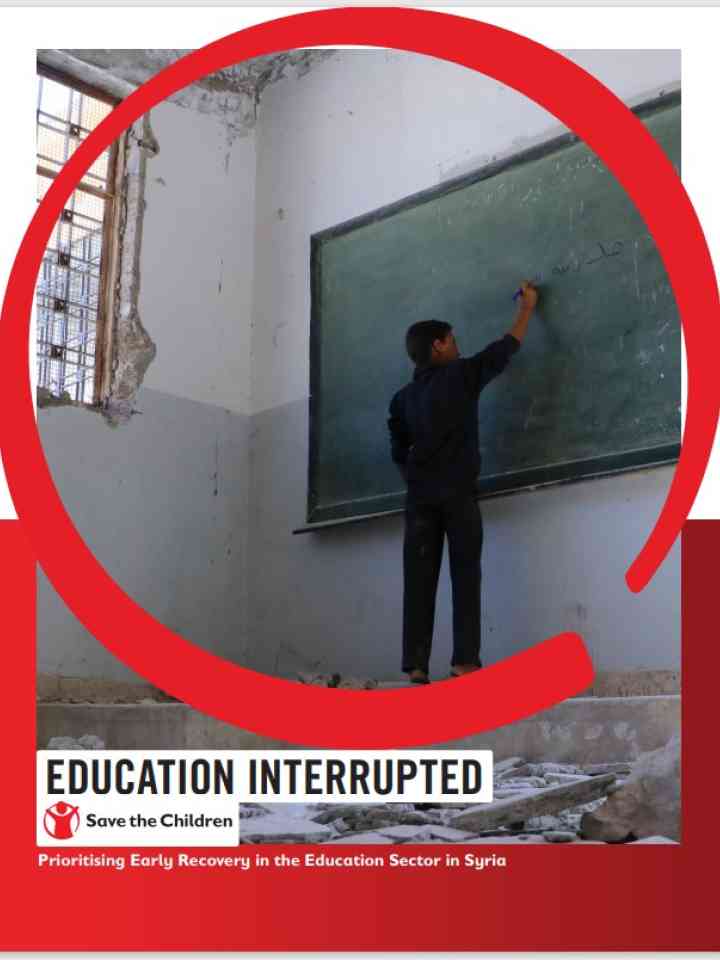Education Interrupted: Prioritising early recovery in the education sector in Syria
This report builds on findings from 100 qualitative individual interviews with Syrian girls and boys and 50 individual interviews with teachers and also draws on the education findings of the 2022 Humanitarian Needs Overview.
Children across Syria want the same things: to travel to school safely, learn in clean and adequate surroundings, learning from trained teachers, and with modern equipment. They want the type of education they know other children across the world have. But after eleven years of conflict, hard questions need to be asked about whether the education sector across Syria is sufficiently strengthened, resilient, and resourced to support children to access a predictable, safe, and quality education that sets them on a positive pathway into adulthood and to engaged citizens.
While 95% of all children in Syria today learn in in-class formal settings, many of their basic needs and rights are not possible to fulfill. While conflict persists in the country, an adequately resourced national education system remains out of reach, leaving millions of children reliant on support largely provided by humanitarian education actors. However, restrictions including on working with formal schools under certain authorities, of supporting schools that teach certain curriculums, competing claims of oversight over the sector in some areas, threats from authorities to arrest and detain teachers if they teach certain curriculums, and a culture that does not consult children on their preferences and priorities have all conspired to limit the ability of these actors to meet children's needs.
Explore further
